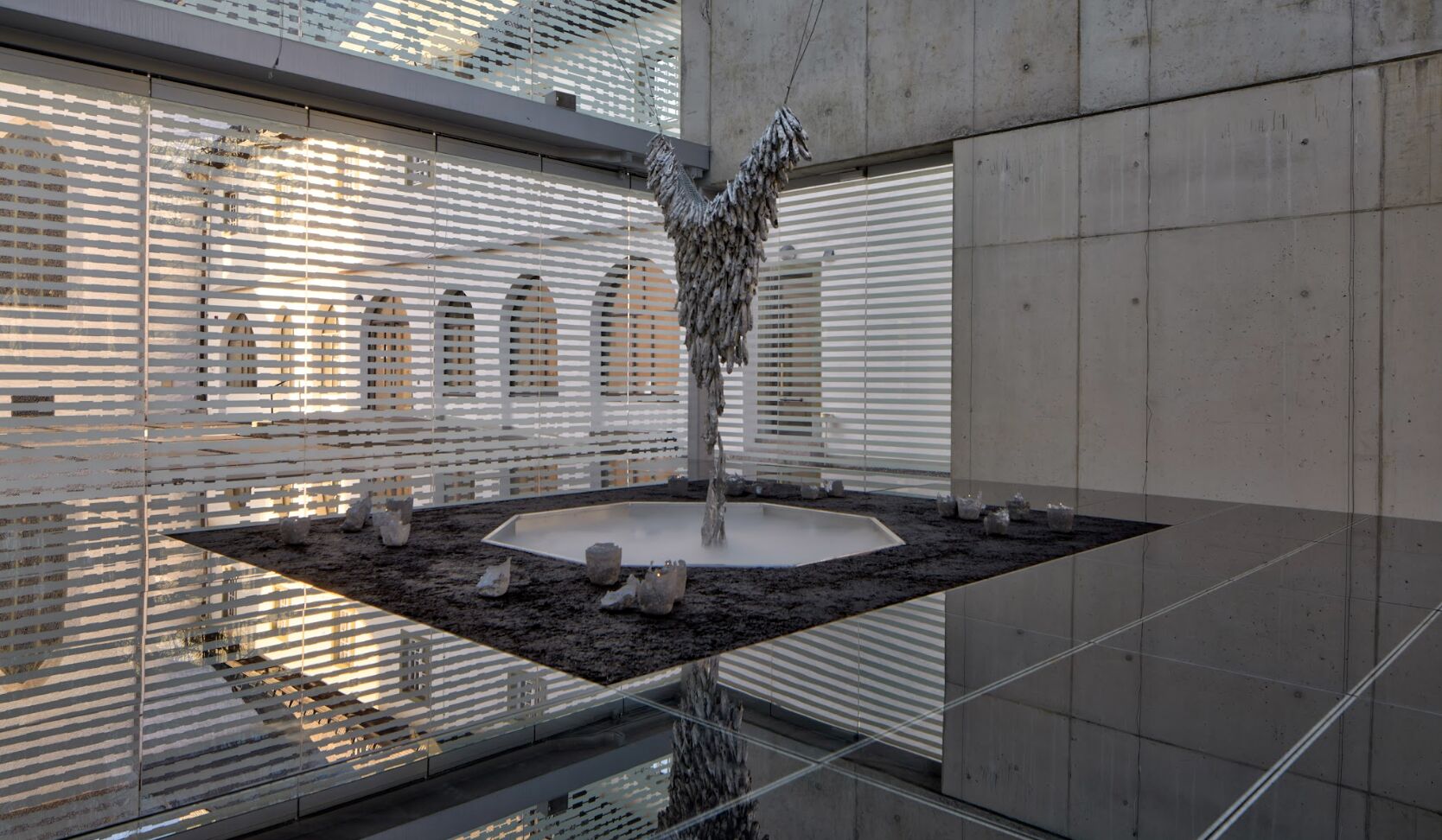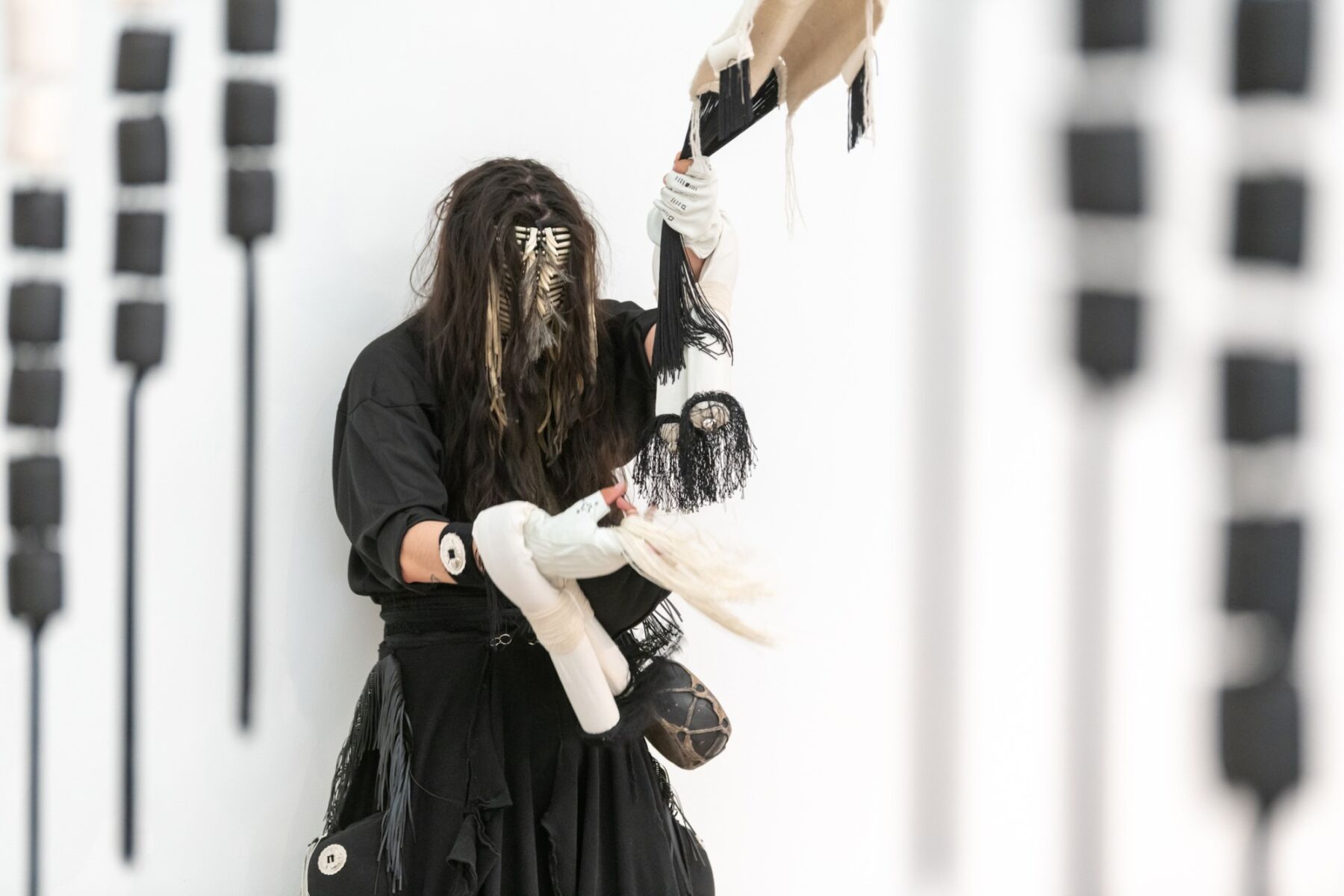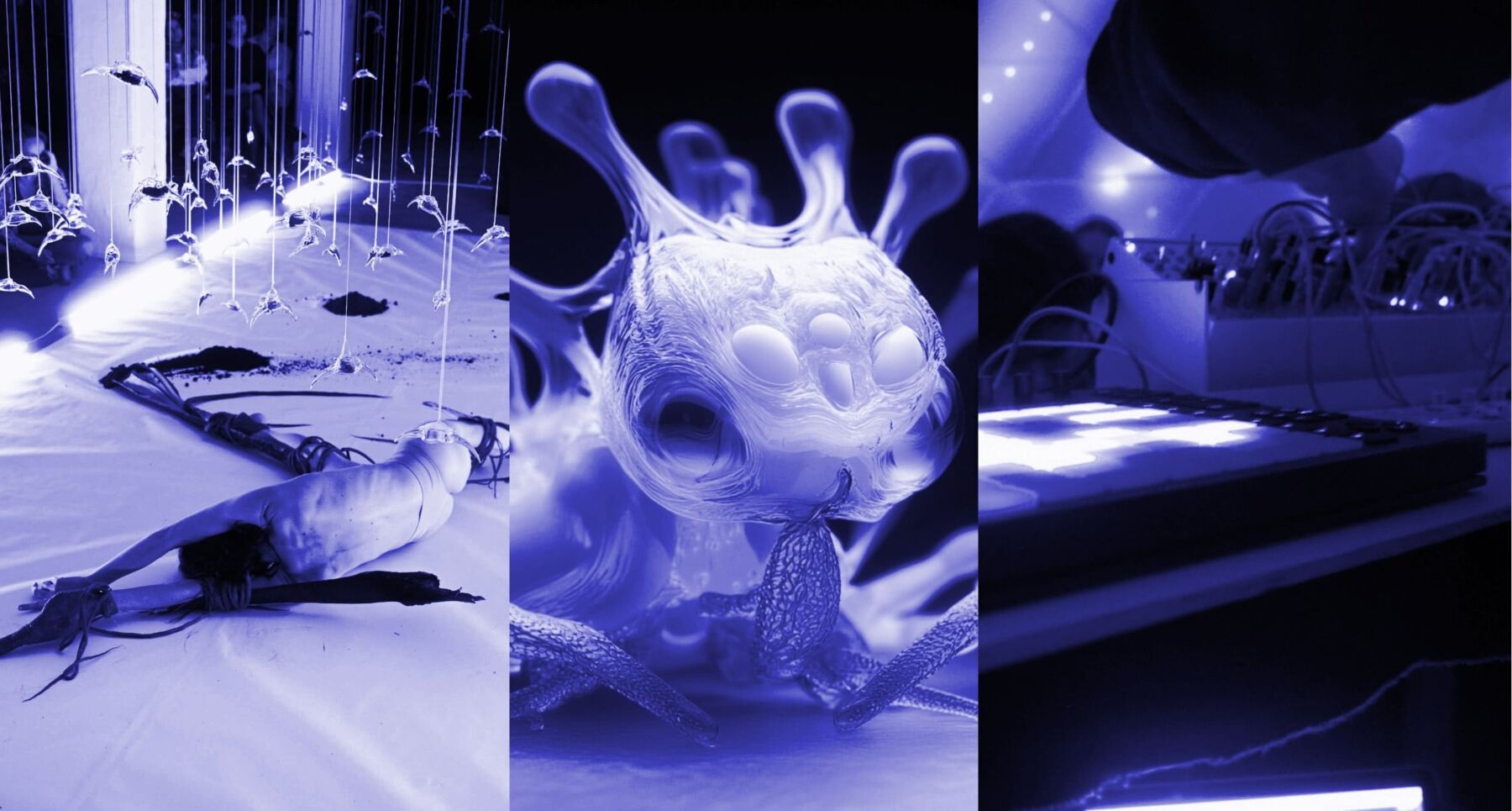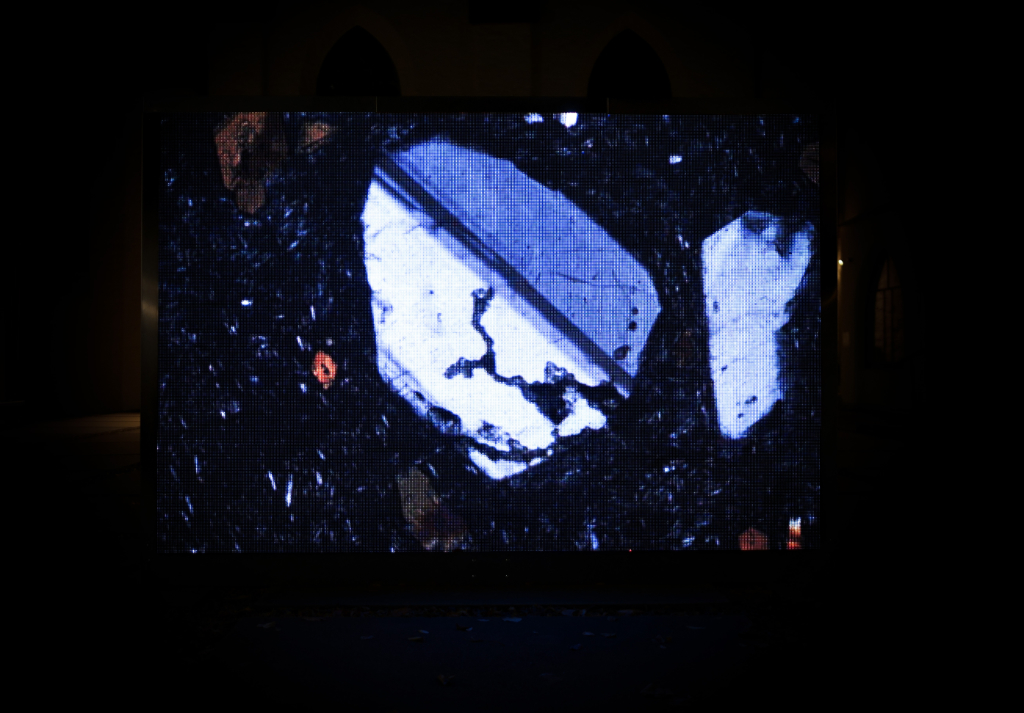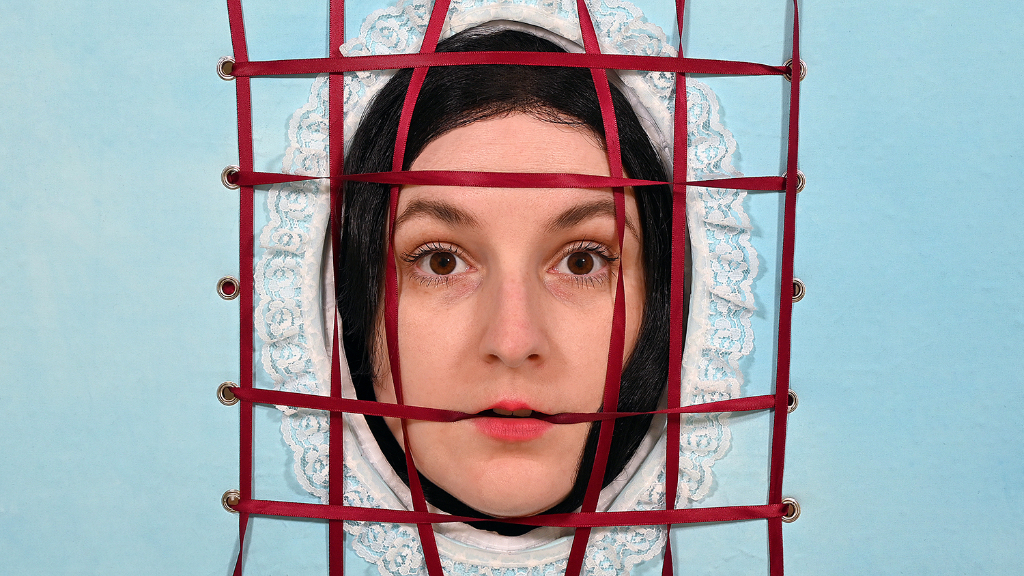Interview by Laura Netz
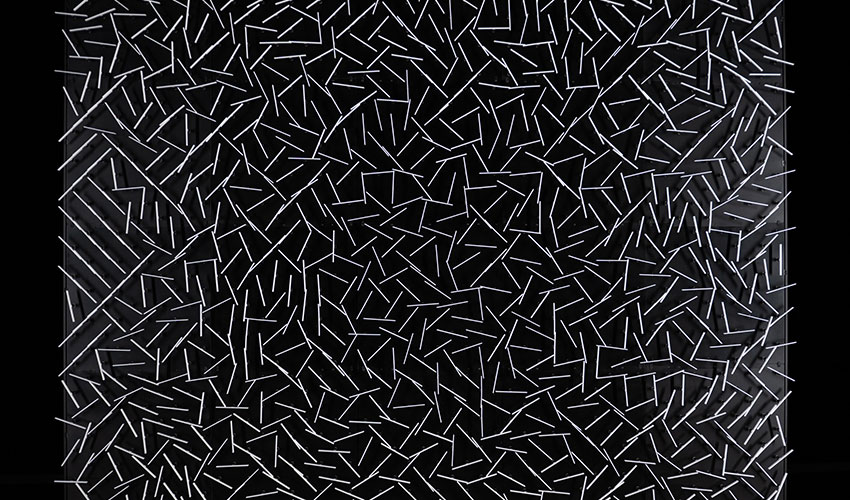
Ralf Baecker is a German artist and programmer working at the interface of art, science and technology. Baecker studied media art at Cologne’s Academy of Media Arts and is a professor of experimental design at the University of the Arts Bremen. Through installations and machines, Ralf Baecker explores the potential of technology and its fundamental mechanisms.
With a background in computer science, his representations of digital technology unfold the processes that occur underneath the interfaces of standard devices and systems. Ralf Baecker turns the machines inside out and reveals hidden and secret computational processes.
His installation works are known for using complex electronic systems. On some occasions, Ralf Baecker creates installations in which audiences are in front of a machine that is not under control of its own but rather engaged in processual existence. While in other artworks, the artist applies principles of media archaeology, digging obsolete technologies.
In Irrational Computing, Baecker uses elemental quartz crystals to create a basic signal-processing unit. And in Mirage he creates a luminous red light projection based on readings of the earth’s magnetic field, for which he received an Honorary mention at Ars Electronica 2015. For Order+Noise (Interface I) he used background radiation data to control mechanical movements.
Ralf Baecker’s work Putting the Pieces Back Together Again involves 1250 stepper motors that create a swarm-like display of mechanical movement that acts as an instrument or experimental setup to investigate questions of complexity that are detectable in a social and economic system, but just on different scales. Most of the works originate from thought experiments and become a physical implementation of these. With all these revealing processes in art machines, Ralf Baecker investigates the relationship between thinking and the world and understanding technology not as a tool but as an epistemological instrument.
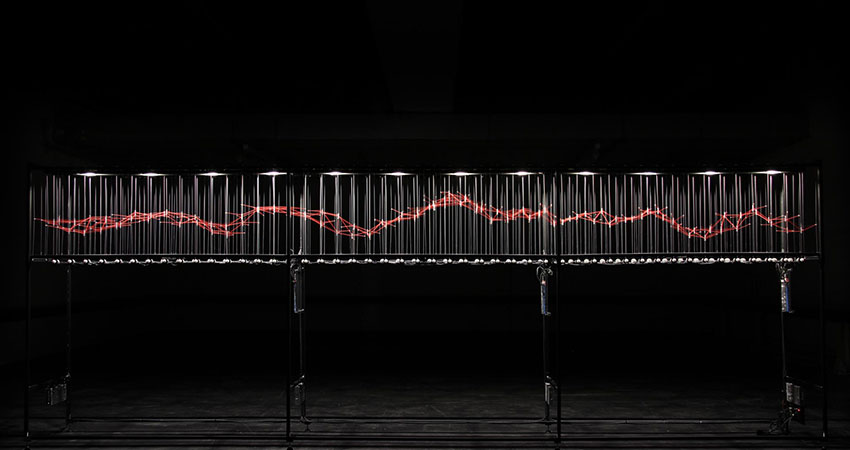
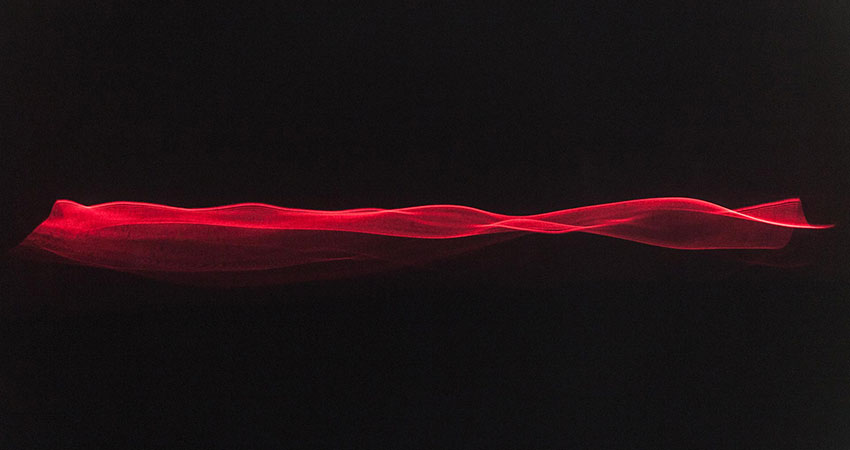
Your work is at the interface of art, science and technology through installations and machines. Which is your perspective on technology?
I think technology is a multi dimensional-complex, and through its ubiquity, it is deeply interwoven into our human existence and ecology. When I was a student, one of my professors asked me what technology means to me in relation to my artistic practice. Is it just a tool or something more? Even though I was not sure what it is, I was certain that it is more than a tool to solve problems.
I grew up being fascinated by technology and its possibilities, building my own things and programming software. Nowadays, having the earth-spanning technological infrastructure in mind, especially information technology, produces awe and fear. But exactly this ambiguity makes working with it so interesting and important. Technology and the way I approached it has become some kind of subjective, idiosyncratic poetic language system to articulate very basic questions about technology.
Your work in 2004 is about audiovisual performance and software. But it evolves to installations such as the re-active platform (2010) and Irrational Computing (2011) that, in a way, “deconstruct” human relations with technology. How has this evolution been?
Right now, my field of research is how I can use generative code and generative design to simulate things like mountains, clouds or the ocean. These are not motifs or patterns strictly, as I see the definition of patterns. A mountain, cloud or ocean it’s not something you can predict so easily because if you see a bit of water or a picture of the ocean, you can’t tell what the next wave is going to look like.
Part of your work consists of kinetic computational sculptures such as Rechnender Raum (2007). In this interest of the relations humans-machine, you show hidden technological processes. But the use of neural networks and AI make the computational processes independent and autonomous. What is your point of view about the future of AI?
Rechnender Raum is from 2007, when AI was not a buzzword yet. I was interested in artificial neural networks (ANN) and parallel computation and in certain systems that are able to create a behaviour that mimics organic/natural systems. But Rechnender Raum is a way to show that in the end, all these ANN or computing in general, no matter if realised on silicon, with wood or any other material, are just complex aggregations of mechanical elements.
What are computable means what is mechanisable! Nowadays, these kinds of systems had become extremely powerful and complex. It’s quite hard to say where AI is going. Within artistic practices, I have not seen many interesting things yet. Most people were just jumping on the AI train as my phone manufacturer did with my new double AI phone. I just heard that the next AI winter is coming.
In re-active platform installation (2010), you investigate a way to introduce change inside a given system. Where does this interest in machines as a logic system interacting with humans come from?
The re-active platform was a collaborative project with Artur Holling, Karin Lingnau, Luis Negrón van Grieken, Ji Hyun Park and Susanna Schoenberg. The group was established at the Academy for Media Art in Cologne. So very different artistic positions infused the platform that we were installing in different constellations and institutions.
I can only talk about my perspective on this and my other projects. The machines as we know them in the 20th century are mechanisation of algorithmic logical systems based on the theoretical Turing machine. So in order to make a comment about these extremely complex black-boxed systems and their interactions with humans, I had to strip down the complexity of these systems and start to build these from scratch in order to test them literally bit by bit.
The works Crystal Set (2011) and Irrational Computing (2011) are about the necessary materials and minerals such as silicon, galena, germanium, or quartz required to produce information technology devices. How do you approach this shift in digital aesthetics towards materialism and media archaeology?
As Rechnender Raum (Calculating Space) used mechanics to look at the inner working of contemporary algorithmic processes, I tried to shift my focus on the contemporary material culture of computation which is silicon and other semiconducting materials that are integrated into highly complex circuits. I have been interested in media archaeology before; Rechnender Raum was also deeply inspired by my research on the origin of computation and its material culture. CS and IC were just the next logical step. I later realised that this fits in a new discourse around the geology of media and new materialism.
The kinetic installation Putting the Pieces Back Together Again (2018) acts as an epistemological instrument to look at dynamics in social systems, economics, climate system and biology. What do you think critical design is making to contribute to a better understanding of current society?
I’m not sure if PTPBTA has anything to do with critical design practice. But I have always been a friend of speculative and critical design practices. For me, PTPBTA and many of my other installations act as an instrument or experimental setup to investigate questions of complexity that are detectable in the social and economic system, but just on different scales.
Most of the works originate from thought experiments and become a physical implementation of these. Lots of projects go from deconstructing systems to reconstruction with other materials or matter on different scales. For me, this is a natural process of understanding and learning. The final machines and installations offer these de- and reconstruction processes as an instant and infinite repeating process.
What is your chief enemy of creativity?
I haven’t met the enemy yet.
You couldn’t live without…
Oxygen, nutritions, sunlight, family and friends.


